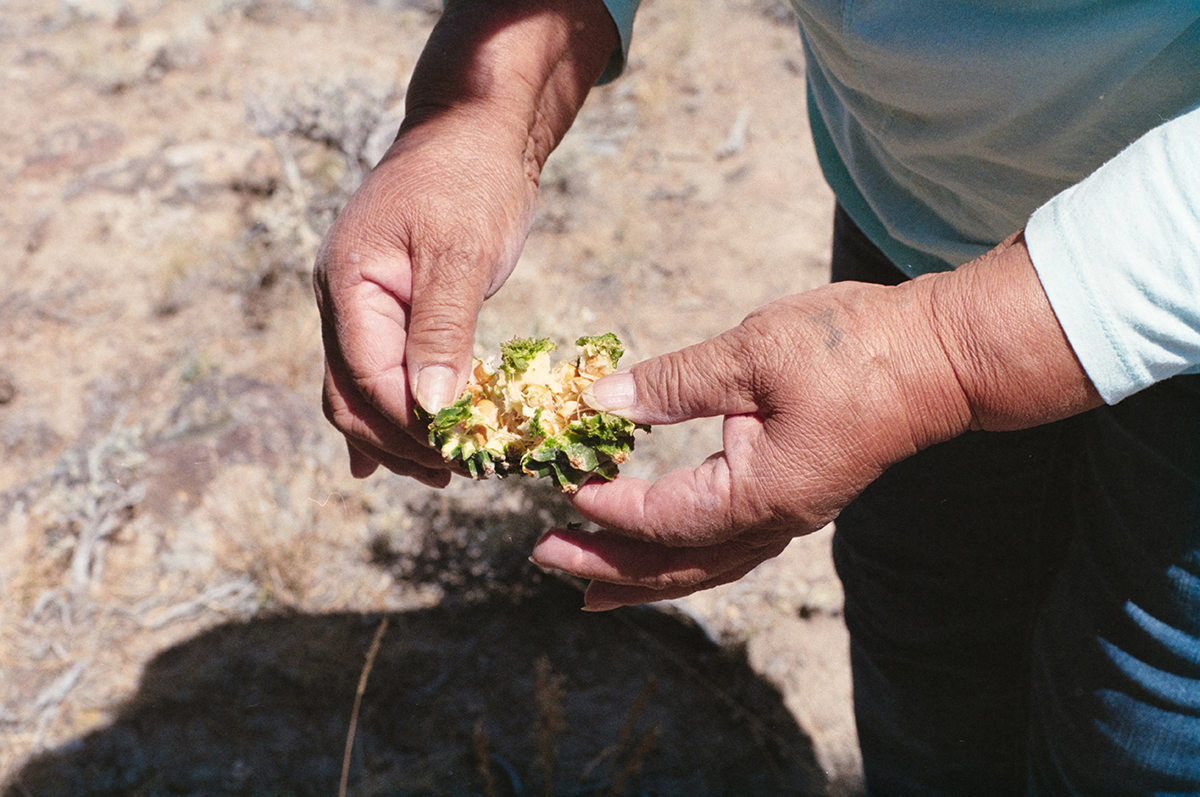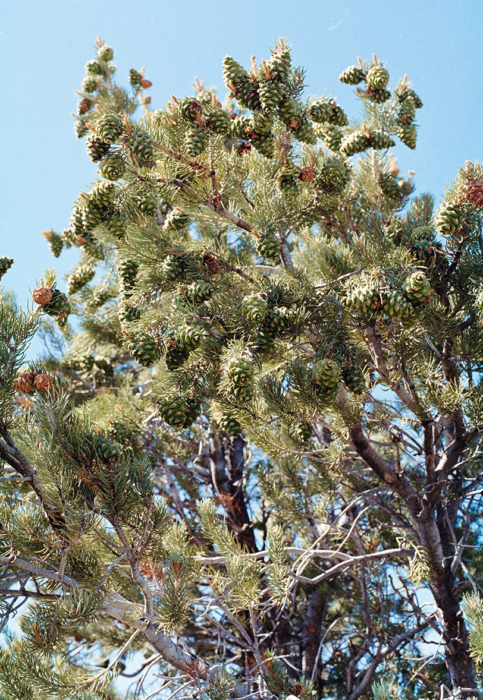
A pamphlet printed in 1980 by the U.S. Forest Service about harvesting pine nuts in Nevada opens with: “Today’s nibblers, sitting in front of a cozy fireplace or watching TV, enjoy the taste of delicious pinyon nuts. So did the Indians of ancient times, as they sat before their primitive fireplaces.”
As far as Darlene Dewey, 76, is concerned, pine nuts still sustain Native communities throughout the Great Basin. Dewey is an enrolled member of the Yomba Shoshone Tribe, and many families like hers have incorporated traditional gathering practices into their contemporary lifestyles. For Shoshone communities in Nevada, pine nut harvesting is one of the most important. But the practice faces threats.
Pinyon pines are especially sensitive to heat and drought — and Nevada is experiencing more of both in recent years. While temperatures in the state have been climbing, residents have started to notice a seesaw in weather patterns with long, hot droughts, escalating wildfire risk, and sporadically intense winters. Pinyon territories farther south have already seen massive climate-related die-offs. Fewer trees mean Indigenous gatherers are facing escalating competition with commercial and illegal harvesters.
In August, as Dewey and her grandson, Jay Martin, 26, headed out on their first pinyon scouting session of the year, she couldn’t help but wonder how much longer they’ll be able to take part in the practice so important to her family and her culture.
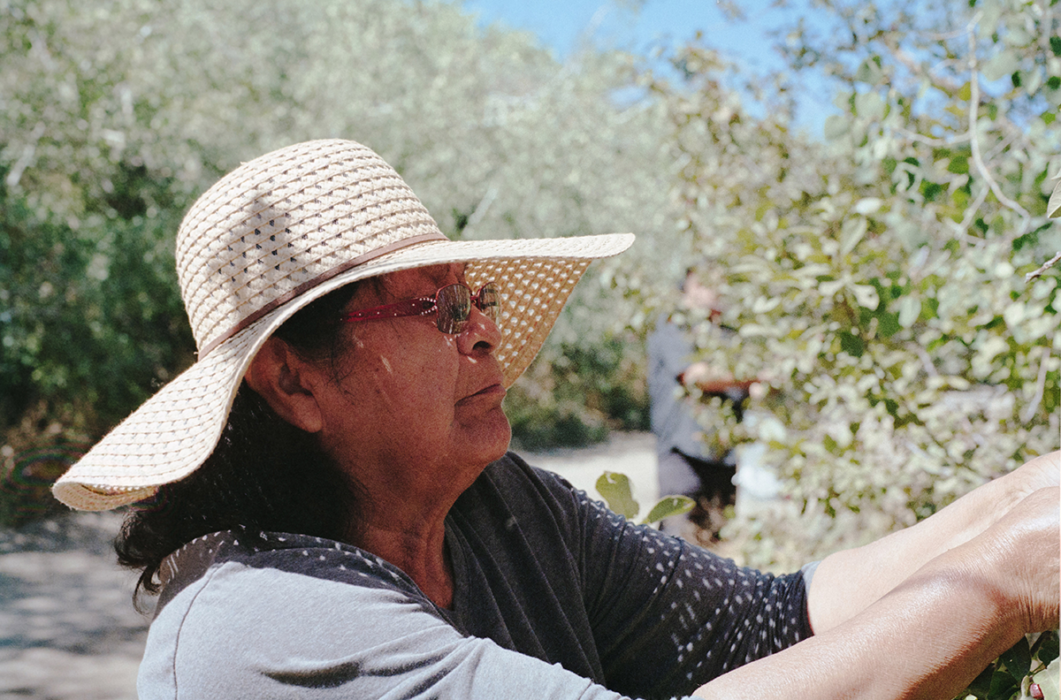
It used to snow in Yomba. Dewey was born in this small community nestled in the Reese River Valley of central Nevada, and she remembers drifts so high she couldn’t see the fences in the fields when she was a child. “We wouldn’t see the ground until May,” she said. “We used to have a lot of snow, and I think that’s why we had a lot of pine nuts.”
Traditional gathering was a necessity for Dewey’s family to get through long winters isolated in their home. Even now, the closest grocery store to the reservation is in Fallon, a two-hour drive away.
“I remember when we used to get a lot of pine nuts because when that snow comes, there’s no way to get out into the mountains to get pine nuts or wood. You couldn’t get out,” Dewey said. She remembers climbing into the family vehicle with her siblings, nieces, and nephews to head into the hills for the annual harvest. They regularly brought home 100 pounds of nuts or more to store for the winter.
Driving through the vast valley carpeted in sagebrush and dotted with small hills, Dewey pointed out the old cellar her father dug into a hillside to store the family’s harvested goods: nuts, berries, roots, potatoes, and milk from the tribe’s once abundant cattle herd. These staples, Dewey said, would get them through the coldest months. “We didn’t have any TV as kids. We used to eat pine nuts and do our homework.”
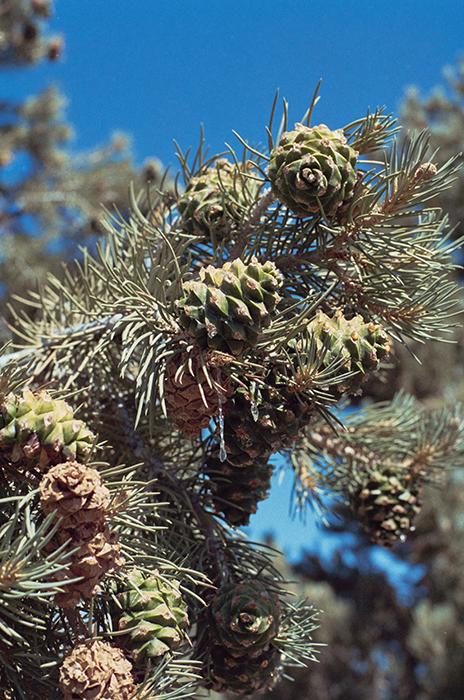
The drifts of Dewey’s childhood have diminished into a few inches of snow most winters. And the pine nuts in the surrounding Humboldt-Toiyabe National Forest have slowly disappeared with the snow. “We pick them the same as we picked them a long time ago. There was a lot of pine nuts at that time. The trees would be just loaded,” Dewey said. “Now you see not all the trees have pine nuts. Maybe every other tree has nuts.”
Pine nuts are not domestically cultivated on farms like many popular American crops. Pinyon trees are typically found on public lands managed by the Bureau of Land Management or the Forest Service, which also dictate harvesting regulations. Those collecting pine nuts for personal consumption are allowed to harvest up to 25 pounds per household per year; any more than that, and a permit is required. Although Dewey and her family probably won’t hit the 25-pound threshold, she sees the limit as an affront to traditional lifestyles, a way for the government to control what Native individuals can and cannot do on their ancestral lands.
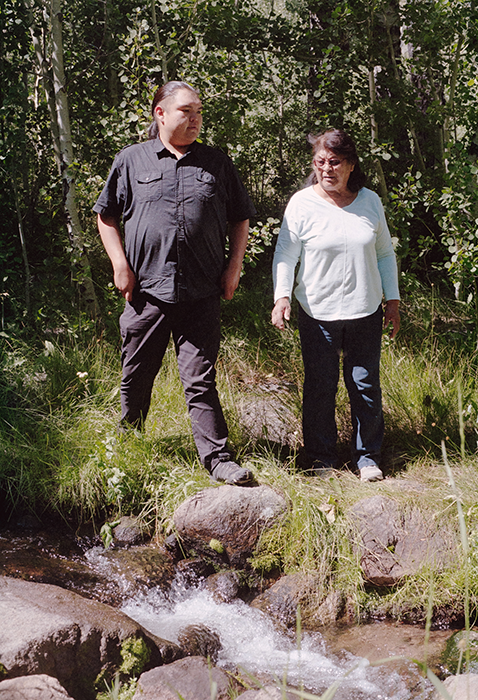
Late August is typically when Dewey and Martin head into the canyons and forests to scope out the upcoming pine nut season. Although pine nuts are no longer a staple food essential to survival, the two said the practice is important to tribal identity. Around this time, pinyon cones are still green and encased in sap, but Shoshone people collect them and roast them underground to open the cones and cook the nuts.
Around October, the cones open on their own, but waiting until fall is a gamble, as the nuts may already be picked over by birds or other harvesters. As the climate here has changed, with longer periods of drought and hotter temperatures, late picking has become even riskier. The nuts they find might be dried up or infested with bugs.
“When we had the long period of super intense heat, it seemed like the trees just melted,” Martin said. “The pitch just melted away, and the cones were exposed. They weren’t protected, and they were susceptible to bugs and disease so the nuts didn’t get to ripen.”
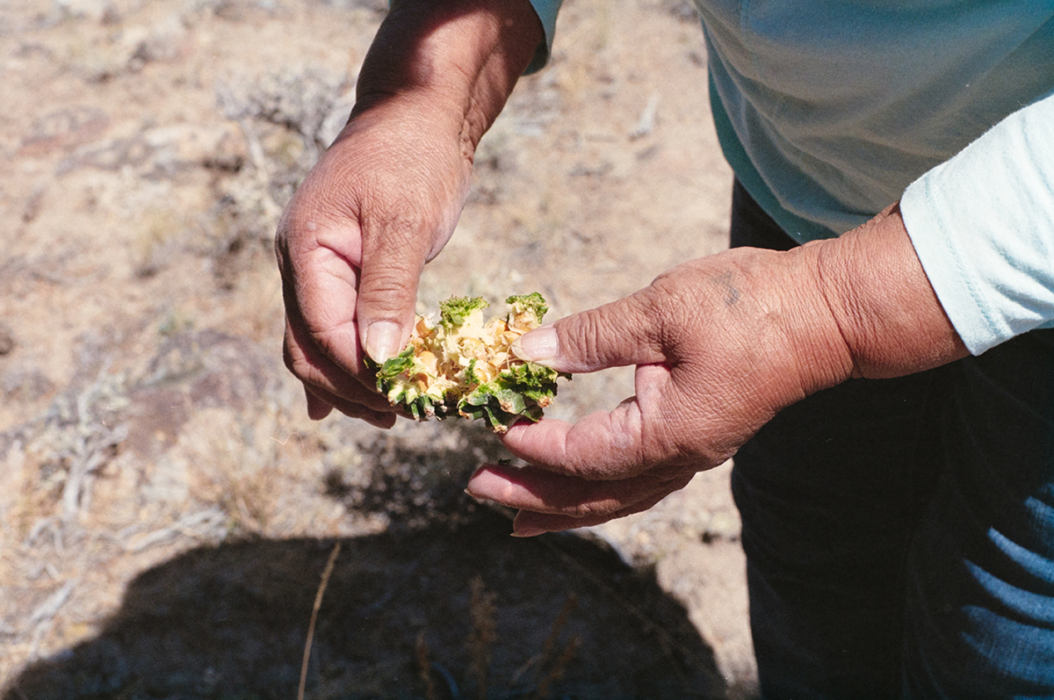
This year’s above-average snowpack and long, wet spring seemed to have helped the supply of pine nuts, Dewey said. Bumping up and down the mountain dirt roads in Martin’s truck, the duo scanned the tops of pinyon trees for the green cones glistening with clear pitch. After spying a few trees with promising bounty, they traipsed through the sage and plucked a few cones from the branches, being careful to protect their hands from the sticky sap. But the cones had a strange discoloration. The side exposed to the sun was pale yellow, while the shaded side remained green. “They’re healthy on the inside,” Martin said. “We’ll see how they are in a month.” He speculated that the discoloration was due to a short spike in temperatures the area saw in August.
Dewey has seen yellow cones before, but it seems more common now, she said, and that might be cause for concern. “I don’t know whether that means it’s going to turn brown and dry up. We’ll see what happens, but I see a lot of brown dry ones in different places,” she said.
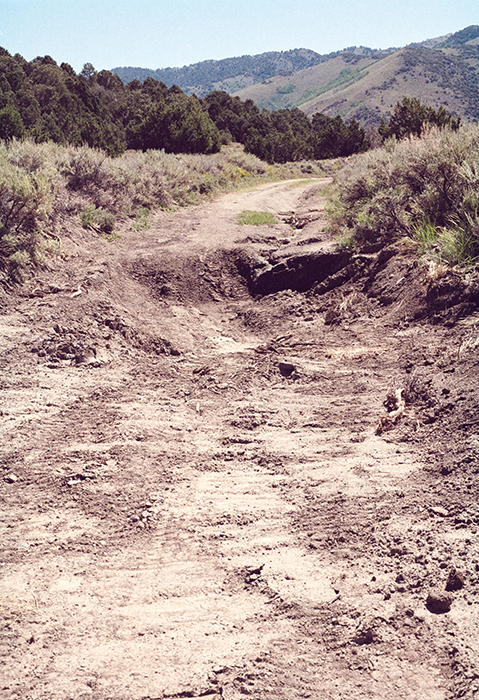
The excess water this year may not have harmed the trees, but it does cause problems for harvesters. Already rugged roads get washed out, forcing travelers to drive off-road through the sage. Get stuck in the mud, and one can only wait for someone to find them. If they’re lucky, they’ll have a sliver of cell service and can call for help.
Dewey worries about fire’s impact on the pine nut harvest as well. In 2018, Nevada saw the worst wildfire in the state’s history. Influenced by hot, dry conditions and plentiful vegetation that sprouted up after an unusually wet winter two years prior, the Martin fire scorched 439,000 acres north of here.
Pinyon groves can take decades to re-establish — sometimes as long as 50 to 100 years, according to the BLM. They grow just a few inches a year, and pine nuts take two years to mature for harvest, so fire can be devastating to areas that don’t often burn.
“I remember a long time ago when I was younger, we used to have a lot of lightning and thunder — but one thing we didn’t have was forest fires,” Dewey said. “I think because of all the snow that we had, it wasn’t so dry like it is now.”
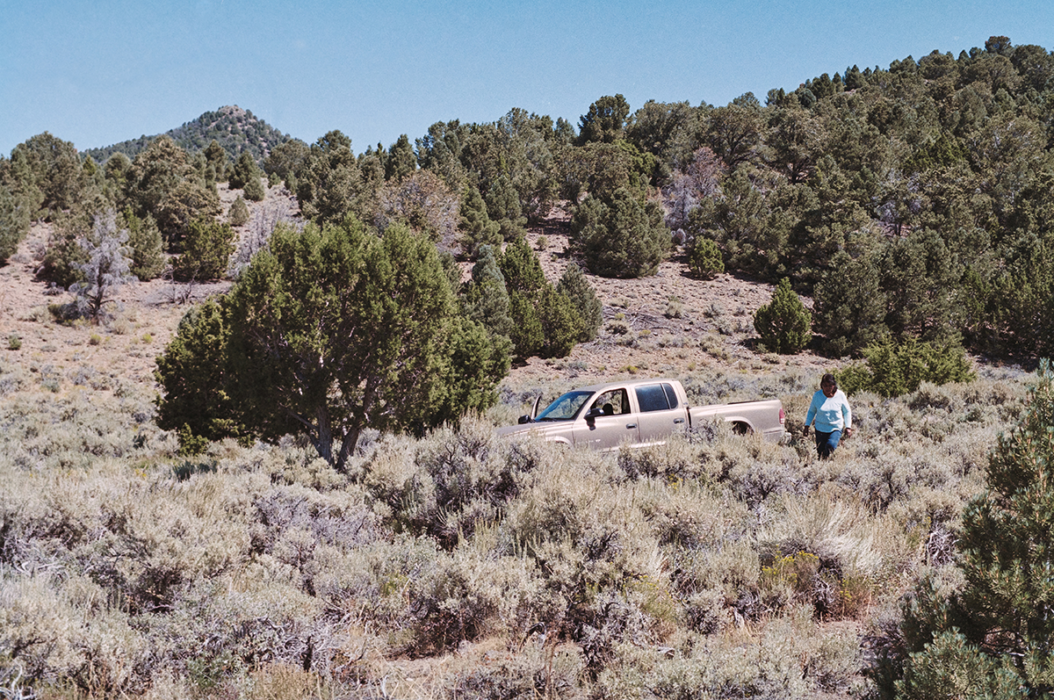
With fewer pine nuts comes greater competition between personal harvesters and commercial outfits. The Forest Service and BLM issue commercial harvesting permits every year to businesses and citizens bidding on available parcels. Dewey claims these outfits have started harassing other pickers, leaving messes in their camps, and over-harvesting the nuts.
“It’s gotten to the point where I don’t want to go out there by myself,” Dewey said. “I don’t feel safe.” She said she has heard gunshots when gathering nuts, believing this to be a tactic some harvesters use to scare unwanted competition away. Dewey said she has been followed, and has seen other pickers survey her, watching closely until she and her fellow harvesters leave the area.
The BLM and Forest Service have issued very few permits for commercial harvesting over the past few years, and say any harassment is likely coming from illegal harvesters trying to fly under the radar.
“A commercial harvesting contract is a binding agreement,” Erica Hupp, a public affairs officer for the Forest Service, said. The contract dictates where, when, and how commercial pickers can harvest, and has restrictions to protect the trees and the land. And while the Forest Service does enforce its agreements with commercial contracts, illegal harvesting has become increasingly problematic.
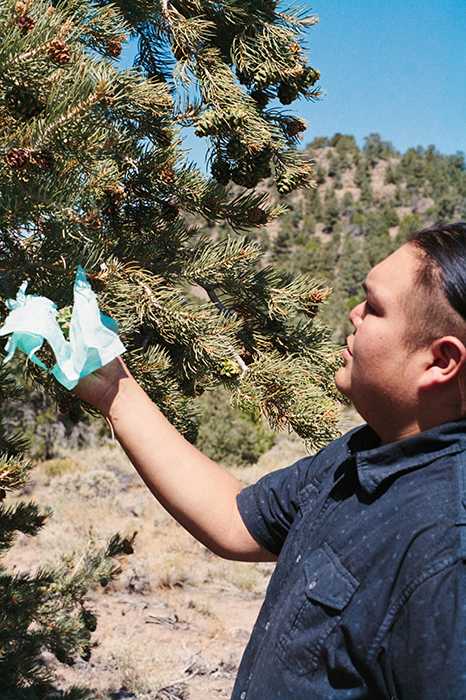
Dewey and Martin said the problems with other harvesters have only cropped up in the past few years. In response to tribal complaints, the Forest Service and BLM started a program in 2017 to try to curtail illegal harvesting and address tribal concerns by holding open meetings and creating protocols for reporting illegal or threatening harvesters.
Coreen Francis, BLM’s lead forester in Nevada, said it’s unclear whether the communication program is making a difference so far. “Part of the challenge with illegal harvesting is the lack of reporting when it’s happening. We only hear about it after the season is closed,” she said.
The Forest Service has guidelines on its website for pickers who feel threatened by other harvesters; it recommends reporting the threat to law enforcement.
“I think we are being more diligent now, and we are asking people for help because we want to solve the problem as quickly as possible,” Hupp said. “We are trying to coordinate with the tribes and hold meetings and find out more how important pine nuts are to them, and how we can issue commercial permits without interfering with their harvesting.”
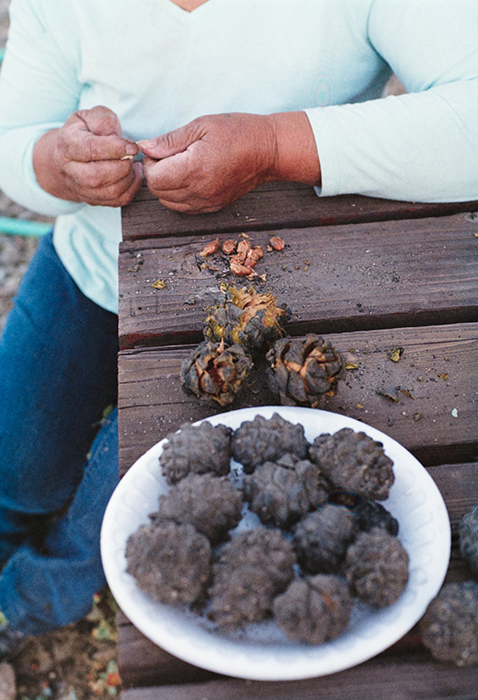
Martin speculates that smaller amounts of nuts caused by long-term drought have created more aggressive competition among commercial harvesters, illegal harvesters, and community members alike. “It became territorial because different people have wanted [the land] and different agencies have been trying to manage it,” he said. “Even amongst our people, it’s become a commodity.”
Hupp hopes the BLM and Forest Service’s communication with tribes and encouragement to safely report illegal activity will slow down unlawful harvests. But she is realistic about how much they can do. “We’re never going to be able to stop all illegal activities,” she said. “Unfortunately, the area is just too big with few officers. But working with the public and reporting will help us investigate.”
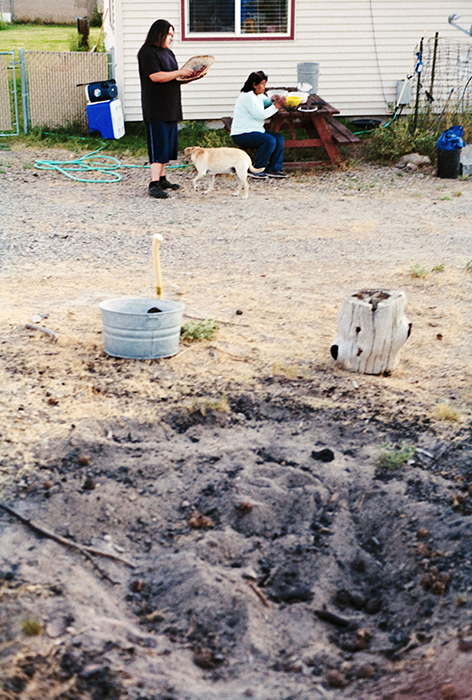
Many Shoshone families view pine nut gathering and other traditional harvesting as valuable practice, and the biggest threat to keeping it going, Dewey and Martin said, is the uncertainty in climate patterns.
“Pine nuts is pine nuts. They still taste the same,” Dewey said, cracking open cones that were baked underground behind her house. She and Martin shell some of the nuts, wiping the ash from their fingers before popping them into their mouths.
“Right now, our trees look good,” she said. “We have pine nuts this year. Next year, I don’t know.”

